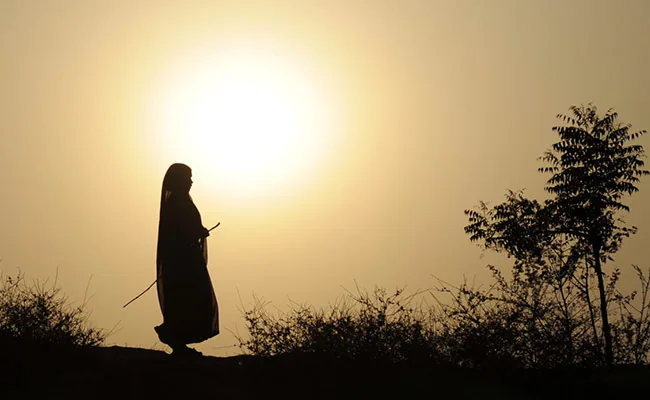Record Heat Waves Push India Closer To Limit Of Human Survival
India, on course to becoming the world’s most-populous country, risks approaching the limit of human survival as it experiences more intense and frequent heat waves.
The national weather office has forecast rising temperatures in the coming weeks after India experienced its hottest February since 1901. That’s stoked concerns that there will be a repeat of last year’s record heat wave, which caused widespread crop damage and triggered hours-long blackouts. While temperatures as high as 50 degrees Celsius (122 Fahrenheit) are unbearable in any condition, the damage is made worse for those of India’s 1.4 billion population who are stuck in tightly packed cities and don’t have access to well-ventilated housing or air-conditioning.
“Heat stress for humans is a combination of temperature and humidity,” said Kieran Hunt, a climate scientist at the University of Reading who has studied the country’s weather patterns. “India is typically more humid than equivalently hot places, like the Sahara. This means sweating is less efficient, or not efficient at all.”
This is why in India a measurement known as the wet-bulb reading – which combines air temperature and relative humidity – provides a better gauge of heat stress on the human body. A November report by the World Bank cautioned that India could become one of the first places in the world where wet-bulb temperatures could soar past the survivability threshold of 35 C. “The question is, have we got inured to heat-led suffering?” said Abhas Jha, one of the report’s authors. “Because it’s not a sudden onset disaster, because it’s a slow onset, we don’t push back on it.”
While no country is untouched by global warming, there are multiple reasons that make India an outlier. The following interview with Mr Hunt, which examines those factors, has been edited for length and clarity.
What’s the climate science behind India’s more intense heat waves?
It helps to separate heat wave temperatures into two parts – the background, or the monthly average temperature, and the anomaly, or the the bit added or subtracted by the specific weather occurring at the time. Over India, since the pre-industrial period, the background has increased by about 1.5 C. Therefore, everything else being equal, the heat wave weather patterns today would be associated with temperatures about 1.5 C warmer than had they occurred a hundred years ago. There are other compounding factors: over some cities, the urban heat island effect has added roughly an additional 2 C to the background. Deforestation also contributes.
Why are they happening more frequently?
This can also be split into two parts. Firstly, the Indian government’s definition of a heat wave is fixed, so as background temperatures increase, less and less strong anomalies are required to surpass the heat wave definition threshold. Secondly, it does appear that the weather patterns – high pressure over north India, leading to dry, sunny, clear conditions with weak wind – associated with these anomalies are also increasing in frequency.
And what makes them more dangerous?
Hotter heat waves, where the temperatures stay higher for longer, tend to result in more fatalities. In India, this is exacerbated by the rapid population increase over the last few decades.
[The danger lies with] India’s background temperature already being so high. In May, for example, the only places on the planet comparable in temperature to north India are the Sahara and parts of the inland Arabian peninsula, both of which are very sparsely populated. With the background temperatures already being so high, over 40 C, even small increases are likely to push close to human survival limits.
How do the heat waves affect people?
There are wide-ranging effects on Indian society. Extended periods of heat waves lead to significant drying of soil over large regions. Aside from the obvious agricultural implications, this can impact the monsoon onset a month later… and can negatively affect agriculture, water security, and even lead to localized flooding, where heavy rain hits dry soil that is unable to absorb it.
Unusually hot pre-monsoon periods are also associated with decreased labor productivity, particularly in outdoor sectors such as agriculture and construction; increased demand for cooling, which can strain the power grid and lead to increased greenhouse gas emissions; and general health risks, such as heatstroke, which disproportionately affect children, the elderly, and low-income communities.
So what can be done to mitigate the damage?
Some ideas that are often talked about in this context are, on the policy level, implementing urban planning guidelines that prioritize green spaces, shade, and ventilation in building design. These are becoming increasingly popular in many Mediterranean cities. At the corporate level: invest in research and development of low-energy cooling solutions, such as passive cooling systems, and promote energy-efficient building design. And for communities, encourage the use of cool roofs, green roofs, and tree planting to reduce the urban heat island effect.

